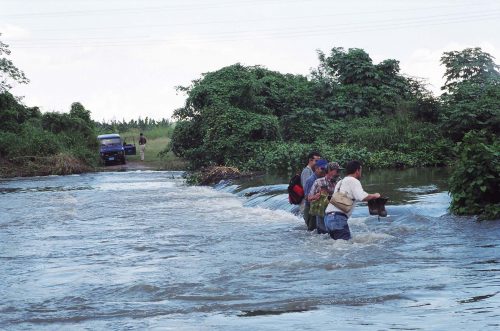As a follow-up by to my article in the December 2002 Friends newsletter (Vol. 1, No. 4), I’m pleased to report that during my most recent research trip to Cuba, I was finally able to examine ecclesiastical records that may shed light on the fate of Calusa and other Florida Indians after their migration to Cuba in the 18th century.

My trip was associated with an ongoing archaeological collaboration between archaeologists in Cienfuegos, Cuba, and in Alabama, Mississippi, and Florida relative to a remote Spanish-contact era Cuban Indian site along the Arimao River near the Bay of Jagua on Cuba’s southern coast. As part of renewed fieldwork at this site, I will be exploring the ethnohistory of the earliest stages of the Spanish conquest of Cuba, which prompted the flight of at least one group of native Cuban Indians to South Florida, where the Calusa paramount chief permitted them to settle.
Also during this trip, I was allowed to conduct research in the original parish records of the church of Nuestra Señora de la Asunción in the community of Guanabacoa near Havana, where many immigrant Florida Indians, including some Calusa people, settled during the 18th century. During my recent trip, I was able to examine all baptism, marriage, and death books for non-white individuals dating between 1679 and 1776, including some books dating as late as 1796 and 1807. I learned that a number of Indian families lived in Guanabacoa during the late 17th and 18th centuries, including not just those from Florida, but also immigrant Mexican Indians and their descendants, and possible descendants of indigenous Cuban Indians, all of whom commonly intermarried with local individuals of African or mixed African ancestry.
Many “Keys Indians” or natives of “Cayo Hueso” (Key West) appeared in the parish records, presumably including Calusa refugees who fled to the Florida Keys by about 1710. However, only one married woman, named Leonor de Sayas, was specifically said to be a native of “Carlos,” and thus presumably Calusa. Two of her infant daughters were baptized in Guanabacoa in 1729 and 1731. She died there in 1766, but there is presently no further trace of her daughters. It is possible that they survived and had children of their own.
More work will be needed to follow up on these and other discoveries in Cuba and elsewhere. Thanks are once again due to Dr. David Noble for his financial support of this second Cuba voyage.
This article was taken from the Friends of the Randell Research Center Newsletter Vol 2, No. 4. December 2003.